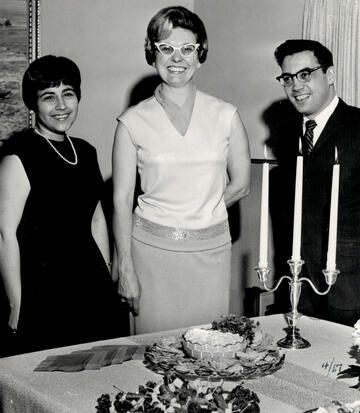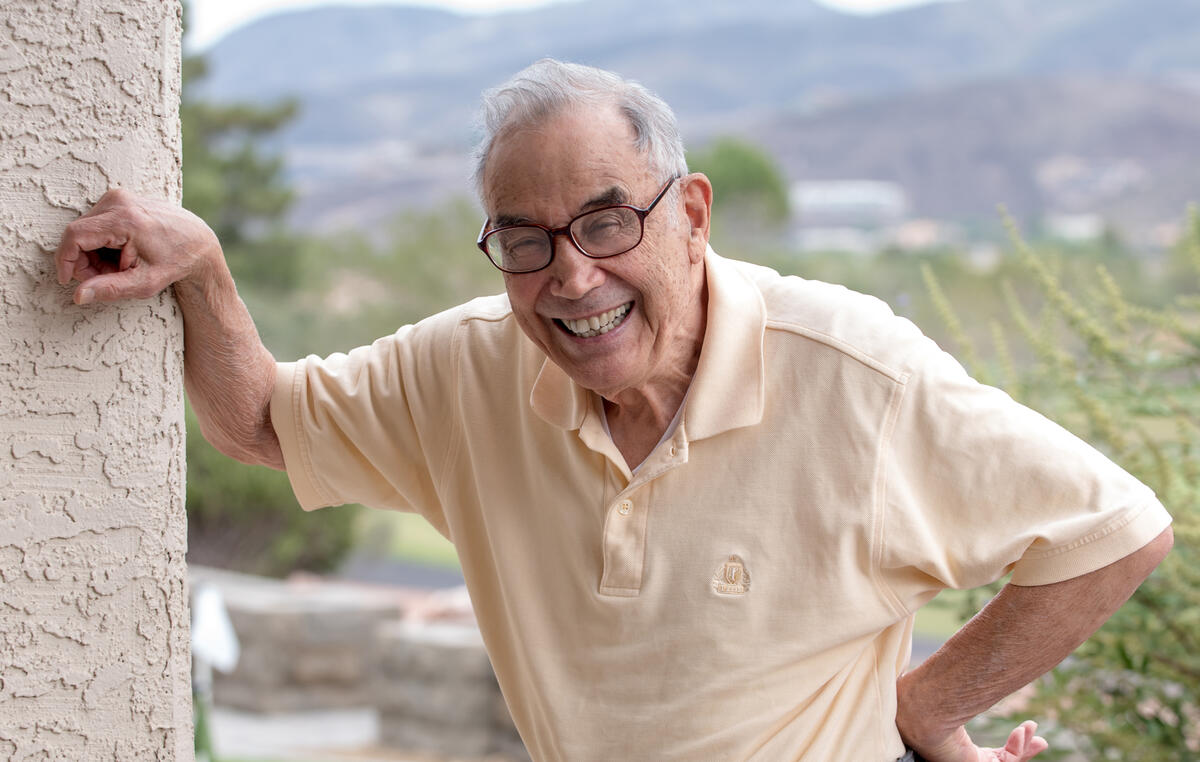Fifty years ago, Philadelphia-born Jerome Vallen was called upon to head a new hotel administration department at a startup university in the shadows of the Las Vegas Strip. This was a tall order, given the program’s virtual obscurity on a campus going through growing pains. But this son of a restauranteur wasn’t to be deterred.
With his characteristic persistence and charm, Dean Vallen chipped away at every obstacle he encountered, fostering an unprecedented alliance with the hotel industry, battling for — and winning — the school’s autonomy, and bringing to bear a new educational model that spawned an era of hospitality superstars.
Here’s a conversation with the man who started it all.
What do you remember about those initial days and weeks after you first landed here?
I started work July 1, 1967. My wife, Flossie, and I arrived three weeks earlier to buy a house. We had four children, and they were all quite young. In those days, the city was in bankruptcy because they had closed the Atomic Testing Area, and there were dozens and dozens of houses for sale. We got friendly with the motel owner where we were staying, and he took me to the bank. The [banker] threw open a cabinet with hundreds of keys, and he said, “You want a house? Pick one.”
What was the UNLV campus like at that time?
It wasn’t very much of a campus. There were two buildings at the front. We were housed with fine arts, business, foreign language, and education in Grant Hall, and at that time it was only myself and two other faculty members, using a great deal of part-time people from the Strip. For years, we used members from the hotel industry for faculty because we had more students than we could get the campus to buy faculty for. And for the first four years, we were subsidized by the hotel community [the Nevada Resort Association].
And now, 50 years later, the college is finally getting its own building. What are thoughts about that?
I think [Dean Stowe Shoemaker] has done a good job. For him to be able to accomplish that … that’s really great. Don’t forget that when the building [Beam Hall] was given to the two colleges (Hotel and Business), the campus was small and young, and it was just a question of economics. They had a big building, and they needed to fill it. So they just put the two colleges in there. We sort of had an affinity with business — but also a disaffinity. We had a lot of arguments.

What were these arguments about?
We wanted to get spun out [of the Division of Business] as we grew. The Business College wanted to keep their number of students, obviously to their advantage. And that was a very traumatic time for the whole campus. There was quite a bit of uncertainty and real drama — that’s a good word to use. It took some nitty gritty work before we were able to succeed, but we did.
Why were students initially attracted to the program?
The internships in the hotels — that was something that nobody else had. Again, we came with money from the hotels, so the hotels were committed immediately to our success. And then the hotels took the interns, and we rotated: Everyone was in housekeeping this week, everybody was in food purchasing next week, everyone was in bells the next week, so that every hotel on the Strip had an intern or two. It was a unique place, no question about it.
What kind of students were you looking to bring onboard?
Those who had finished their associate’s degree and preferably had experience in the industry. I knew that one of the problems that junior college students had was that they had no place to transfer because the few four-year [hospitality] schools that were around in those days — Cornell, Florida, Texas, Denver, and Michigan State — had more students than they needed, and they wouldn’t take transfers. Since I had come out of the junior college programs where transfers were critical, we began to take the transfers. That’s how the population of the program boomed right away.
Early on, what was your biggest challenge as dean?
Getting the rest of campus to acknowledge us as an academic grouping. There was a lot of early tension. I remember there was a fellow named Bob Smith, the dean of the sciences, who was a big supporter and really nice man. And he was concerned, for example, that we were going to teach food science. That would have been a big conflict with the science college. Ultimately, we would have not been successful if it hadn’t been for supporters like Bob, Donald Moyer [the university’s first president], and Jerry Crawford [the university’s vice president], because a hotel program was sort of the antithesis to some of the arts and letters people.
What were some other obstacles you faced?
It was very scary at the beginning because we met with the unions, and they were concerned that we were going to put students into the hotels who were not unionized. We had a couple of nice luncheons and finally convinced them that these were all non-paid internships. So, in the end, we got friendly, and the union members became strong supporters of the program. They would come in and act as visiting faculty members for us. It worked out quite well.
During your 22-year tenure as dean, which accomplishments make you most proud?
We graduated some fantastic young people. Every time we have one of the dinners that I go to, and I see these men and women, I’m proud. When I was dean, our secretary was a woman named Joan Reynolds. She was just a beautiful person. Joan let anyone who wanted to see me, see me. That was the rule we had. Students would come in, and we would talk. It killed a lot of time, but it was worth it. I loved the students.



